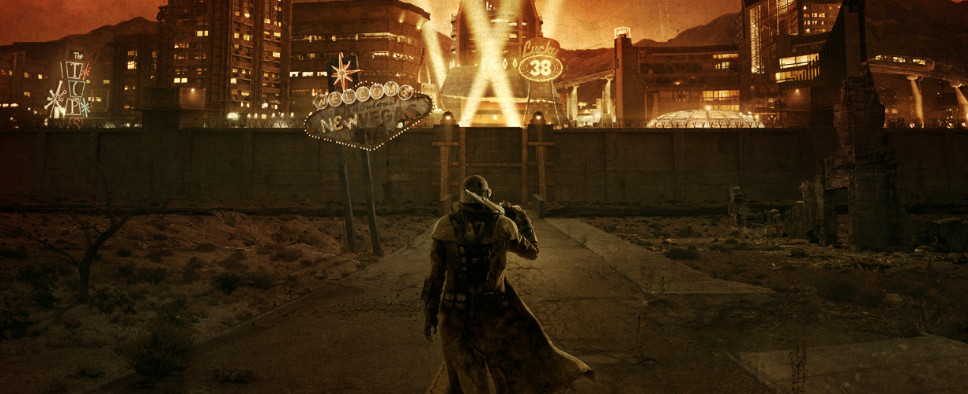Fallout: New Vegas Revisited
-
Category: News ArchiveHits: 5623

In this retrospective article, PC Gamer looks back at Obsidian's Fallout: New Vegas and proclaims it the most authentic 3D Fallout game. It's honestly hard to disagree with this assessment, since for my money, New Vegas is the only 3D Fallout game that actually feels like Fallout at all. And as for PC Gamer, they praise New Vegas' faction and quest design, companions, and writing. An excerpt:
But the Mojave has a very different feel when you wander out to the edges of the map, feeling more like an old western—an atmosphere enhanced by the catchy cowboy ballads that play on your Pip-Boy’s radio. "I took a motorcycle trip through the desert and went all around the outskirts of Las Vegas," says project director Josh Sawyer in the same making of film. "Travelling by motorcycle, you get a lot more opportunities to see the world around you. And it gave me a really strong feeling of what it’s like being out there in the desert, which I then tried to bring into the game."
A slick, smooth-talking New Vegas gangster called Benny, played brilliantly by Matthew 'Chandler Bing' Perry, left you for dead at the start of the game, and chasing him is, at least to begin with, the focus of the story. Benny’s appearance, specifically his garish black-and-white plaid suit, is based on real-world Vegas gangster Bugsy Siegel—one of many historical figures Obsidian looked to for inspiration when creating the game’s characters. But in the big picture, Benny is small time compared to some of the other antagonists you’ll encounter in the Mojave.
There’s the enigmatic Mr House, inspired by infamous Vegas businessman Howard Hughes. He’s a pragmatist, and even a force for good in the wasteland in some ways. But you don’t get that powerful without a certain level of ruthlessness. Then there’s Caesar’s Legion, a tribal army planning to assault and capture the New Vegas Strip and nearby Hoover Dam, whose preferred method of dealing with enemies is crucifying them. And there are other, smaller groups, too, including the Powder Gangers, the Boomers and the Jackals. You’re never short of enemies in New Vegas.
One of New Vegas’ best tricks is sidelining the binary karma system for reputation. Karma is still there, but it has much less bearing on the game. How the factions perceive you is a lot more important, and it’s worth making a few friends. Get cosy with the Brotherhood of Steel and they’ll give you access to their safehouse and occasionally fill a crate with energy weapons and ammo. But anger them and Veronica—one of the better companions—will refuse to join you. Pal up with the New California Republic and you’ll get a radio that lets you call for backup and supply drops. Upset them and they’ll send a hit squad in your direction.
But the game’s greatest strength, and the reason many consider it the best of the 3D Fallout games, is the writing. Obsidian has a solid background in storytelling, and it shows in New Vegas. Quests are more interesting, with a moral greyness that Fallout 3 sorely lacked. In a GDC talk about designing its branching narrative, Sawyer said he wanted to avoid 'Jesus/Hitler' moments: those blunt choices where one option is selfless and noble, and the other is comically evil. "The agony of a choice should fall somewhere between these two spectrums," he says in the talk. "A player should feel like there’s something good and bad about what they pick."
New Vegas doesn’t have the moral ambiguity of some of Obsidian’s other games, particularly the magnificent Pillars of Eternity, but it’s one of the things that sets this Fallout apart from the Bethesda entries in the series. Arguably, though, the Mojave isn’t as evocative a setting as the Capital Wasteland. Civilisation's post-nuclear collapse is felt more vividly in Washington DC. It has a bleakness that you never really get a sense of in the Mojave. That was almost certainly Obsidian's intention, to show us another side of the Fallout setting, but there’s something more compelling about the hopelessness of the Capital Wasteland on that level.

